Most of the major attractions in Kathmandu are reasonably famous and are located within a radius of 5 KMs around Thamel (where most tourists stay). If there was one place that I came accross and that looked a bit far off, that was the Budhanilkantha Temple, a major temple dedicated to Lord Vishnu.
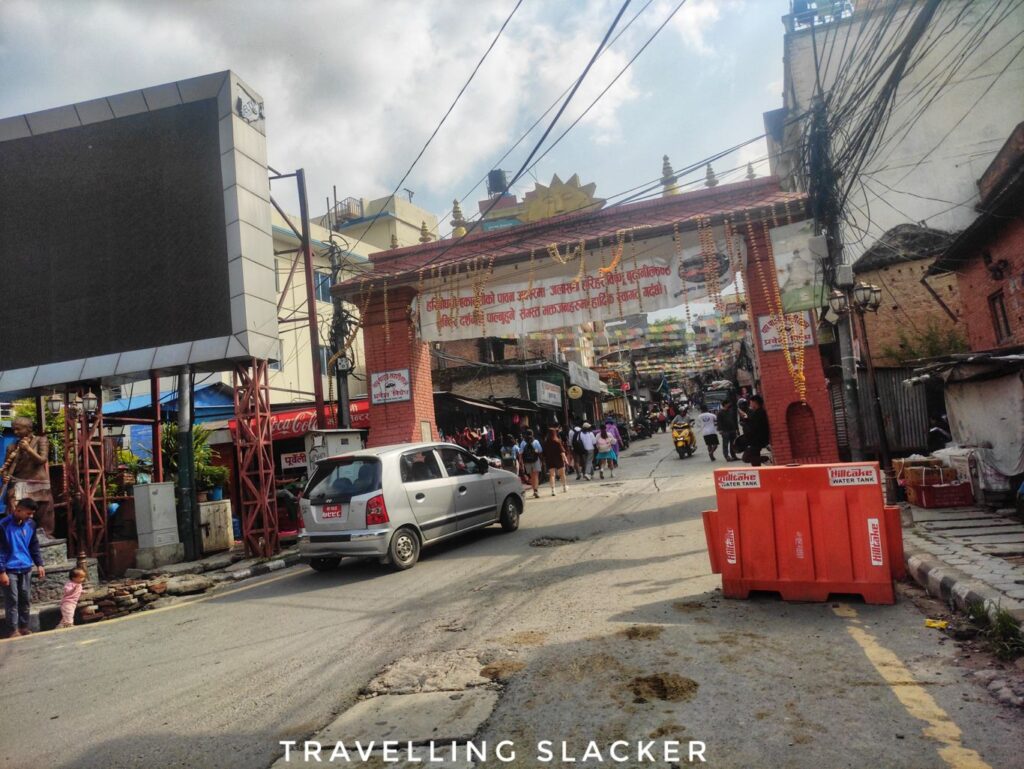
So, it was my last day in Nepal and I had a bus out of the country in the afternoon. I decided to utilise the morning by waking up early and catching one of the bikes for hire (what they nowadays call Pathao, an Uber like app that’s prevalent here). Buses are also available but I wasn’t willing to spend so much time commuting and also had some extra Nepali rupees left to splurge before crossing the borders. So, I hired one of the bowlers from Thamel to take me there for NPR 300.
It didn’t take much time as the bike raced to Budhanilkantha soon and he left me in front of a smaller road bifurcating from the highway. There was a gate with the name of the temple and ten route was going somewhere upwards. I thought I’ll have to hike like Swayambhunath but it took only around 100 meters before I reached the main temple entrance on the left side of the road.
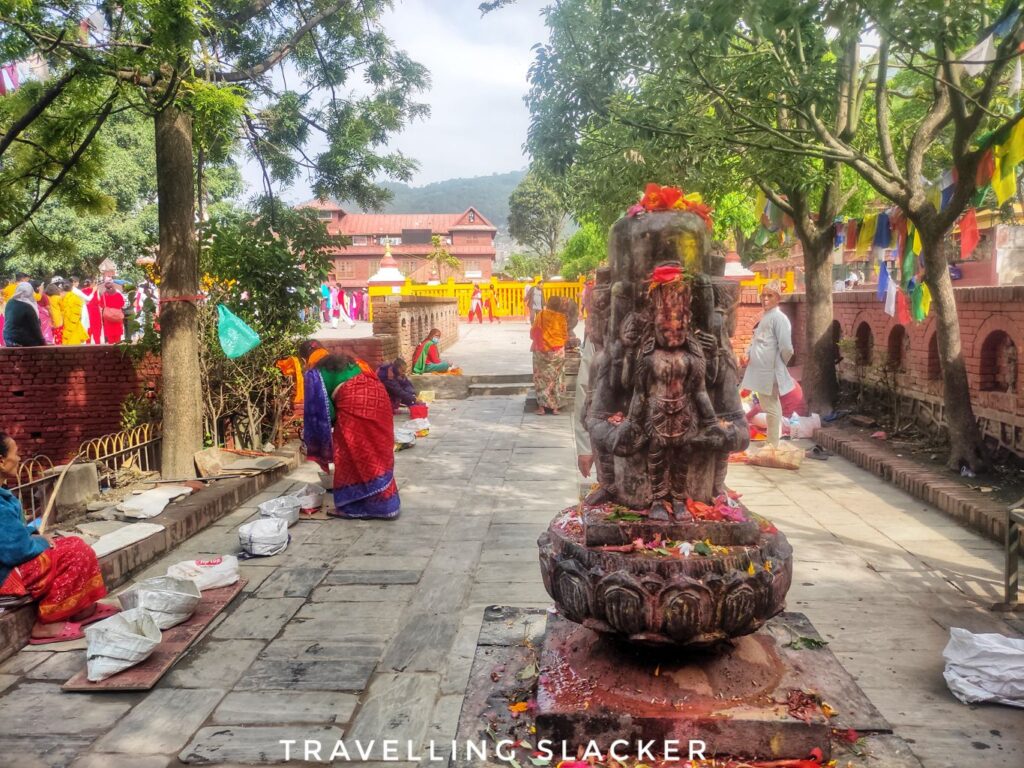
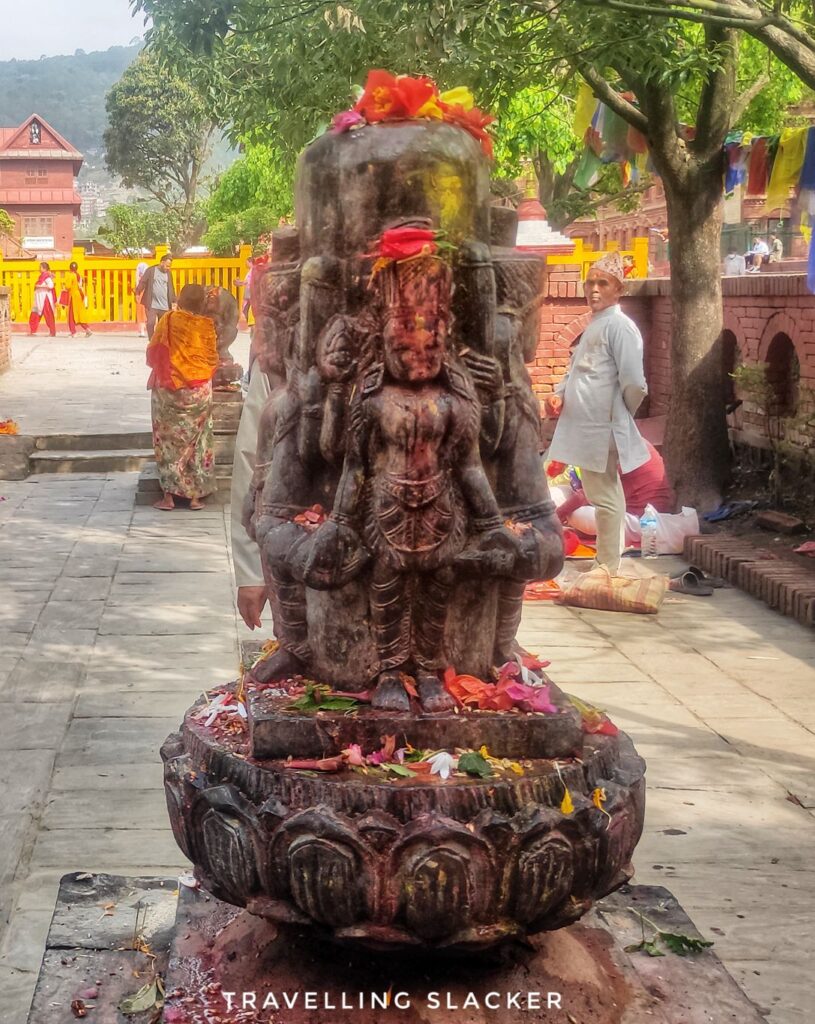
There are some small but intriguing statues installed at the entrance (more about it later). I walked past them to reach the main compound. The main sleeping Vishnu statue here is located in a small pond. It has been protected with walls on all sides while devotees had lined up there from the morning to have a closer look and perform their rituals by getting closer to the statue through a small entrance. It is also possible to have a look at the idol from above the walls without getting inside, which is what I did considering the long queue and the limited time I had at hand.
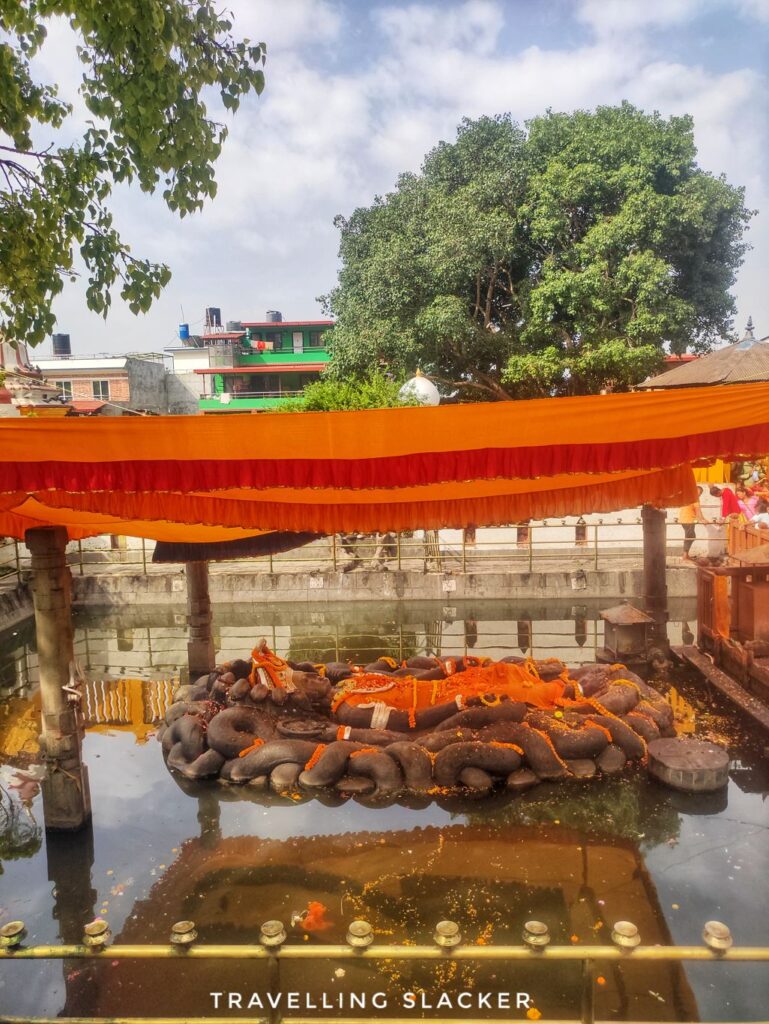
At this point, I have to discuss a few issues that confused me. There is no doubt that this temple is primarily dedicated to Vishnu. The sleeping or reclining Vishnu on the celestial Seshanaga aur Ananatanaga is a popular motif in Hindu iconography. There are places in India where you can see similar statues. My most vivid memory of the same is from Udayagiri Caves of Vidisha.
However, the name of the place is Budhanilakantha which literally means Old Blue Throat. However, when it come to theology, nothing has to be taken literally. Blue Throat (Nilakantha) refers to Lord Shiva because he consumed the poison arrived from Samudra Manthan. So, why a Vishnu temple is named after Shiva. At the same time, this place is also revered by Buddhists, as it happens in many Himalayan shrines. So, is the word Buddha rather than Budha (old)? I guess as it happens with most ancient temples, we will never know the exact answer.
Anyway, I took a round of the compound and soon figured out that getting nearer to the idol won’t be possible and even if I get close, photography probably won’t be allowed at close range. So, I just took some photographs from outside the barricade.
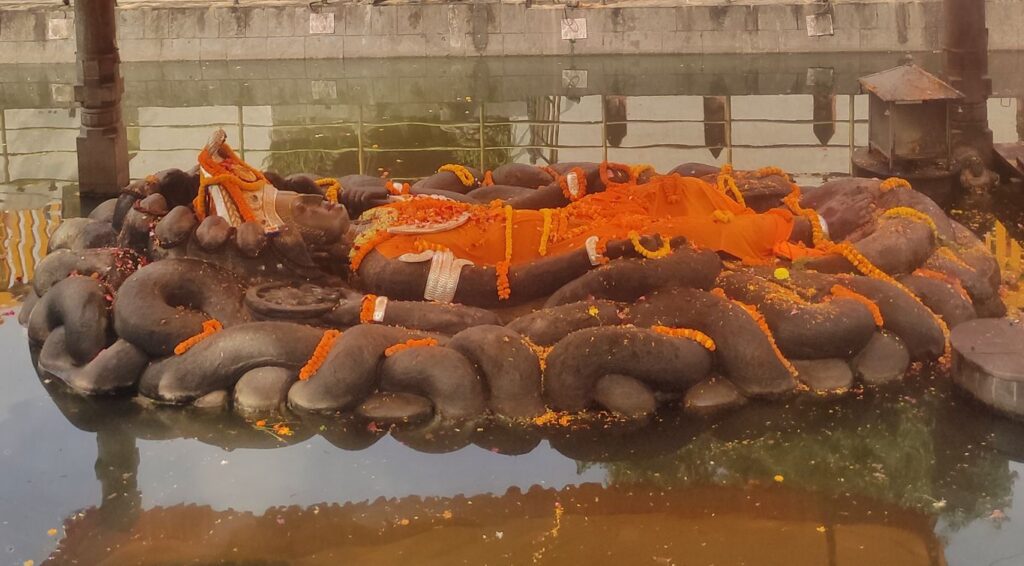
Coming to the idol, it looks not only remarkably well-crafted as expected but also remarkably well-preserved, which wasn’t expected contidering its antiquity. The face of Vishnu and the serpents beneath him seemed to have intricate details (at least from where I was standing). As usual, Vishnu holds Shankha, Chakra, Gada, Padma (Conch Shell, Sudarshan Chakra, Mace, Lotus) in his four hands. The idol looks like floating in the water although it is still, so, there must be some support beneath. A detailed study if the same has never been possible as due to religious significance, researchers usually don’t get close access to the idol.

Aa far as antiquity is concerned, there are multiple versions. One version attributes it to the Licchavi rulers from the first millennium. The second one attributes it to medieval rulers around 14th century. The statues looks pretty well maintained to be extremely ancient but you can never know.
This was more or less it for Budhanilakantha. It was a hurried trip and also the access is limited to this small temple. But it is definitely worth a visit because let me tell you even in India there are very few places where you’ll be able to locate an intact, reclining Vishnu statue.
Budhanilkantha Travel Guide
How to reach Budhanilkantha?
It’s around 9 KMs from Thamel and 10 KMs from the airport. I took one of those two wheelers for hire and paid him NPR 300 as I was in a hurry. But it can be cheaper if you are in a mood to bargain. While returning, I got another bike who quoted NPR 200. It took no more than 20 minutes to reach.
I have seen buses going towards it although I never took them. Apparently you can get one from Lainachur bus stand near Thamel. It’ll be far cheaper but will take more time.
Festivals at Budhanilkantha
The major festiva here is Haribondhini Ekadashi during the 11th day of the Hindu month of Kartik (October – November). The event marks the end of the four-month period of Chaturmas, during which Vishnu is believed to sleep.
How much time does it take to explore Budhanilkantha?
If you are mere going to take a round of the compound then it’ll take 10-15 minutes. If you want to reach the statue and do some rituals, it’ll take a few hours as there is usually a big queue of devotees.

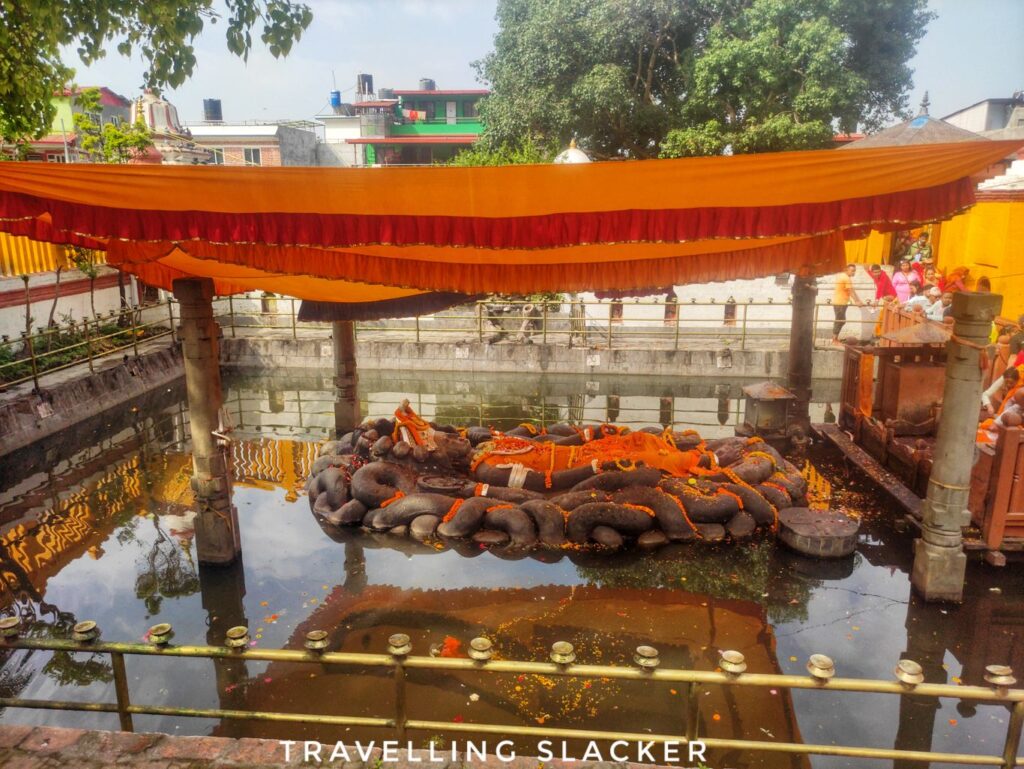
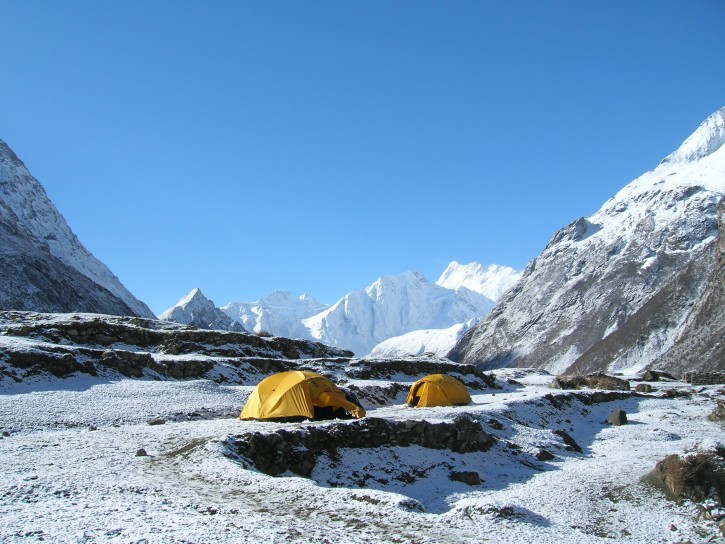
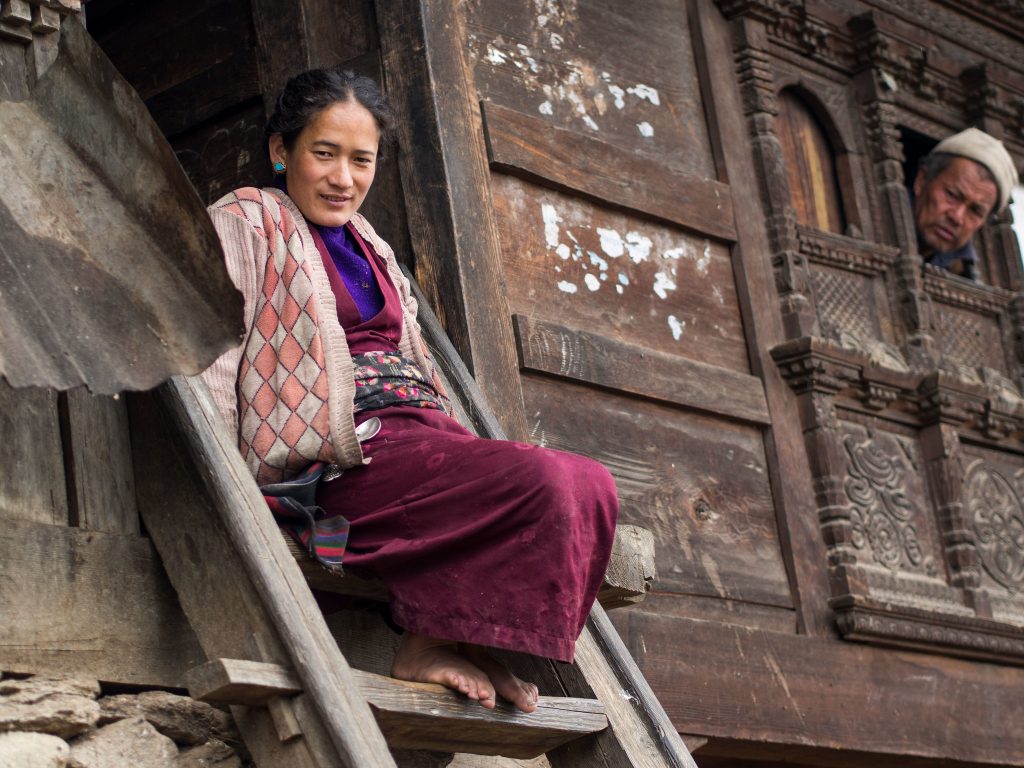
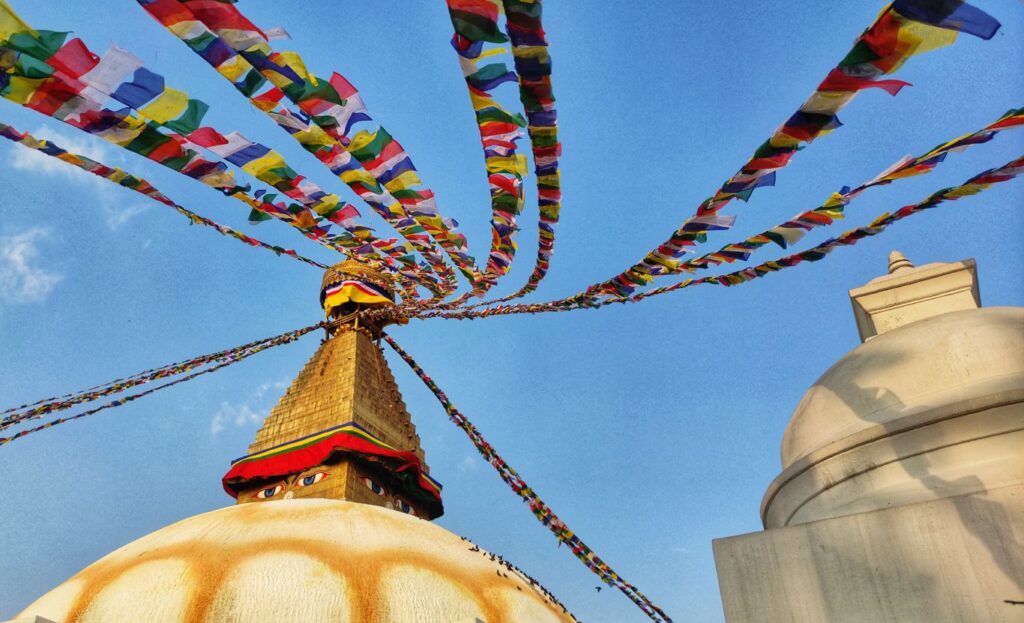
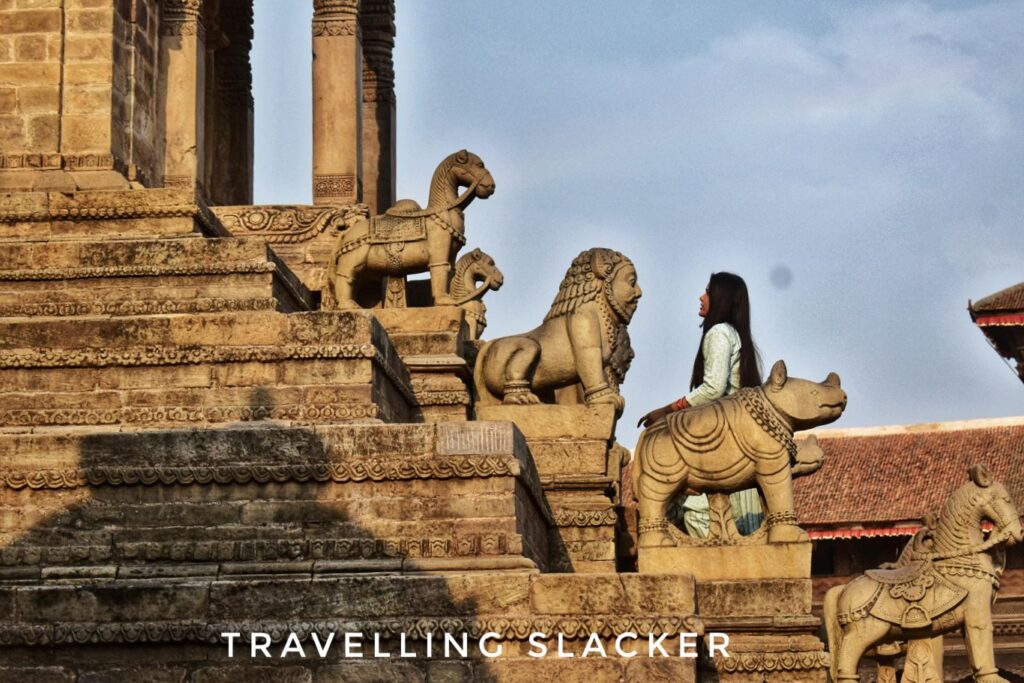
great place to visit, thank you for creating this article